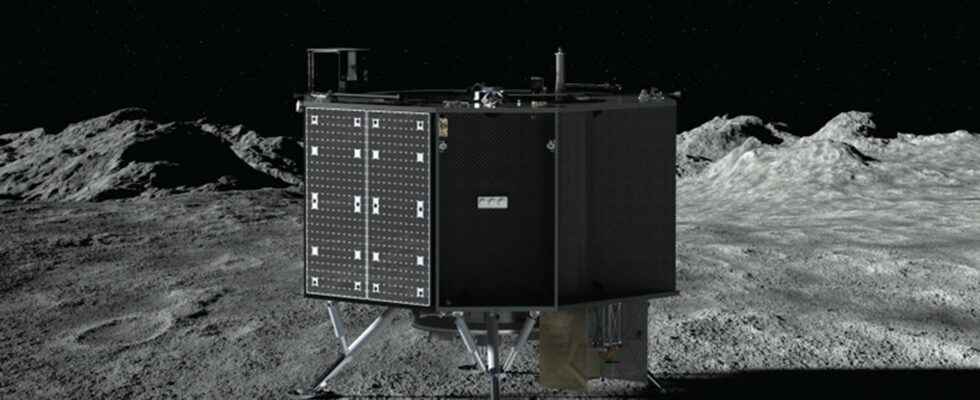For its first scientific mission on the far side of the Moon, NASA has chosen to carry it out as part of the program Commercial Lunar Payload Services (CLPS). This eighth lunar mission will be carried out under the responsibility of the Draper laboratory. It provides for the landing of a lander which will carry three instruments, two of which will be produced in collaboration with Cnes.
You will also be interested
[EN VIDÉO] Craters on the Moon: how many are formed each year? The LRO probe in lunar orbit has shown that small impacts are much more frequent than previously thought, but also that these shocks create secondary impacts with consequences that have been underestimated until now. The lunar soil would thus have turned over a hundred times faster than what was predicted by the models. On these images, we see the wound created by an impact, a crater 12 meters in diameter, and the ejecta are clearly visible.
The Nasa chooses Draper to carry out the first American mission on The dark side of the Moon, scheduled for 2025, and which will be carried out as part of the program Commercial Lunar Payload Services (CLPS). The latter was set up in November 2018 for a period of ten years with a budget of $2.6 billion for private sector companies. This may relate to start-up, established companies or research labs like Draper. This program aims to deliver scientific and technological equipment to the Moon on behalf of NASA at a fixed price.
Seven other missions have already been signed but the deadlines appear very uncertain. The future of one of them, Masten, is in question following numerous layoffs, and NASA recently announced the postponement of the launch of the rover Viper (Volatiles Investigating Polar Exploration Rover). To be continued then.
This eighth CLPS mission aims to deposit, by 2025, the Series-2 lander on the far side of the moonmore precisely in the immediate vicinity of the crater Schrodinger. Of great scientific interest, this basin, with a diameter of approximately 320 kilometers, is one of the most recent lunar impact basins. The impact at the origin of its formation raised the crust deep and the coat upper part of the Moon in its summit ring. It was then the seat of a large volcanic eruption.
Three new instruments on the far side of the Moon
Designed by the American subsidiary of the Japanese company Ispace, Series-2 will carry three payloads (95 kilograms), two of which were carried out with French contributions:
- Farside Seismic Suite (FSS): this instrument, produced by the JPL in collaboration with Cnes, aims to provide the first lunar seismic data from the far side of the Moon. This new information could help scientists better understand the tectonic activity of this region, reveal the frequency of impacts of small meteorites on the far side of the Moon and provide new information on the internal structure of the Moon.
- Lunar Surface Electromagnetics Experiment (LuSEE) is an instrument produced by the space science laboratory of the University of California, also in collaboration with Cnes. Its purpose is to analyze the electromagnetic phenomena created by the interaction of solar wind and plasma with the lunar surface. Concretely, LuSEE will use measures of electric fields and continuous magnetics to study the conditions that control the potential electrostatic of the lunar surface, which in turn plays a determining role in the transport of dust. It will also use plasma wave measurements to characterize the lunar ionosphere as well as the interaction of solar wind and magnetospheric plasma with the lunar surface and magnetic fields crustals. In addition, this payload will perform sensitive radio frequency measurements to measure the emissions solar and planetary radios.
- Lunar Interior Temperature and Materials Suite (LITMS) is a suite of two instruments for the study of heat flow and conductivity electrical from lunar basement inside the landing site (Schrödinger’s Basin.) Combining these measurements is one way to solve the thermal structure and composition of the Moon’s surface. The whole is made by the Southwest Research Institute.
A desire to escape for the summer?
To celebrate the holidays as it should be, discover the Mag Futura at the preferential price of €15 instead of €19, i.e. a reduction of 20% !
On the program of this issue: a dive into the heart of 4 scientific themes that will mark 2022, from the Earth to the Moon:
- What mysteries does the Moon still hide from us?
- Will we soon be able to cure everything thanks to genes?
- How to feed the world without destroying it?
- Can artificial intelligence become truly intelligent?
What is Mag Futura?
- Our first paper journal of more than 200 pages to make science accessible to as many people as possible
- 4 major scientific questions for 2022, from the Earth to the Moon
- Home delivery*
*Delivery is made in France (excluding metropolitan France), Switzerland, Belgium.
Interested in what you just read?
